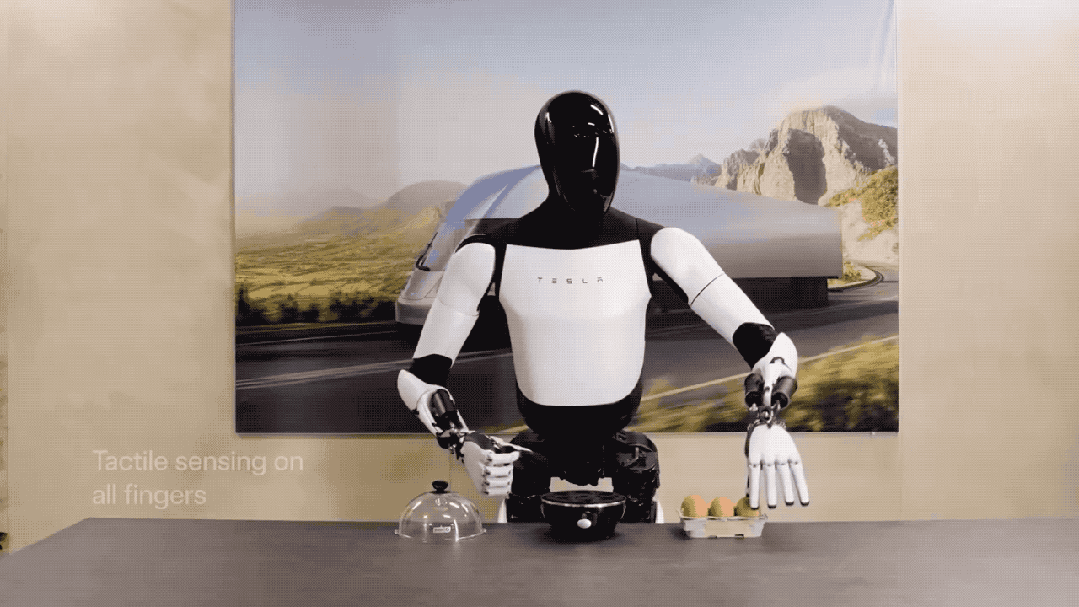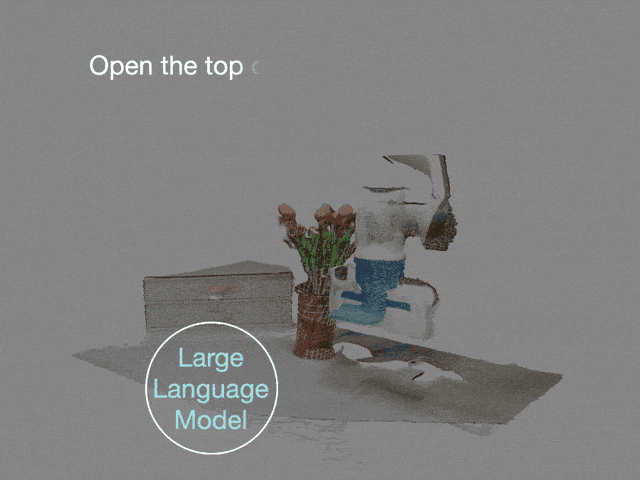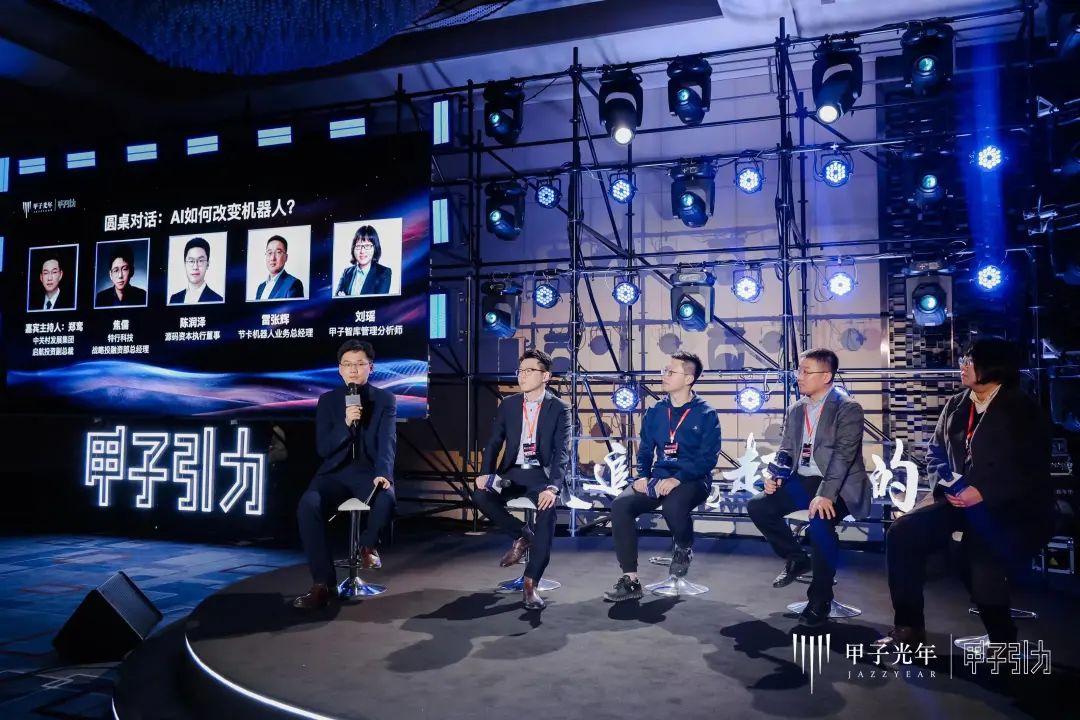Source: Jiazi Light Years
Author: Eight Degrees July
Editor: Lizi

Image Source: Generated by Wujie AI
To what extent is the robot industry hot in 2023?
Danao Robotics founder Huang Xiaoqing used the word "crazy" to describe it. "Currently, China is establishing a humanoid robot company every day; automotive parts manufacturers are fully converging into the robot industry, shifting production capacity towards robots, clearly targeting the huge blue ocean market of robots, opening up a second battlefield."
As the world's largest market for robots, China's robot sales account for over 50% of the world's total sales. With the accelerated advancement of new industrialization, more and more fields have demanded robots: equipping robots with "brains" to think like humans; installing "electronic noses" and "electronic skin" to sense like humans.
For the collision of AI and robots, there is a vivid metaphor: artificial intelligence is the soul, and robots are the body. "Form-soul compatibility" is also seen as the goal of future robot development.
With ChatGPT gaining popularity, AIGC applications coming to the forefront, and large models continuously breaking through from the consumer end to the business end, people are constantly seeking the best landing points and carriers for large models. Suddenly, general intelligent robots have entered people's field of vision and become a new hot topic this year.
However, behind the heat, there are still some calm reflections: large models of robots are currently only at the conceptual level in academia and still need the power of the industry to drive the flywheel forward. For customers, whether robots use AI is not important; what matters is whether the products can be delivered on time and whether the cost is reasonable.
Before the arrival of the anticipated era of general intelligent robots, let's let the bullets fly a little longer!
1. When General Intelligent Robots Become Hot Topics

This year is considered the first year of development for general artificial intelligence, and the same goes for the general intelligent robot industry.
"Intelligent robots will be the third 'computer' for humans after personal computers and smartphones," Huang Xiaoqing made this judgment. "Ultimately, the problem with robots is actually a problem of artificial intelligence."
In the past, robots were unable to perform very complex operations, reasoning, and calculations, fundamentally due to insufficient computing power and the inability to process multimodal data simultaneously. Now, the flourishing development of artificial intelligence will endow robots with more potential and possibilities.
In fact, the use of artificial intelligence in the field of robots has long been commonplace. Over the years, visual and intelligent learning capabilities have gradually been integrated into robots. Robots have performed well in many tasks that are difficult for humans, such as heavy, repetitive, tedious, dirty, or dangerous tasks.
With the support of higher computing power and more data, artificial intelligence makes robots even more adept at performing these tasks: they have stronger learning abilities, can learn through experience rather than programming, and can work in dynamic and changing environments, or alongside humans.
On June 20th of this year, Google's AI team DeepMind also made a big move, demonstrating the AI intelligence body "RoboCat" for robots.
RoboCat is the world's first robot AI intelligence body that can solve and adapt to multiple tasks. "General learning ability" is RoboCat's strength. In addition to "learning more," RoboCat can also "learn faster," greatly reducing the need for human supervision and training, which is crucial for creating general robots.
When we look back at the timeline, from the earliest robotic arms, to exoskeleton robots, to quadruped robots, and humanoid robots, a mountain of difficulty in the robot industry has been gradually conquered.
Just yesterday, Musk demonstrated Tesla's second-generation humanoid robot Optimus Gen2 on social media for the first time. The video shows that with the support of the second-generation large model, Optimus Gen2 robot walks more flexibly, can easily perform deep squats and stands, and can accurately grab, pick up, and put down eggs. The object manipulation ability has significantly improved. In addition, the second-generation robot's sense of balance and body control have also been significantly improved, and walking speed has increased by 30%.
This means that with the assistance of AI, humanoid robots have taken another big step forward.
Previously, at a Tesla shareholder meeting, Musk boldly predicted that the demand for humanoid robots in the future will far exceed that of electric cars. "If the ratio of humanoid robots to humans is around 2:1, then the demand for robots in the future may be 10 to 20 billion, which is a crazy number."

Tesla released a new demonstration video of the Tesla humanoid robot "Optimus Gen2" on X.
A series of narratives have made general intelligent robots a hot new topic this year and have raised the industry's temperature by several degrees.
Zheng Luan, Vice President of Sailing Investment of Zhongguancun Development Group, mentioned at the "How AI is Transforming Robots" forum at the 2023 Jiazi Gravity Year-end Gala that before this year, most of our investments in the robot industry were focused on a specific, professional vertical scene, and general intelligent robots are a new hot topic this year.
2. AI is Deeply Transforming Robots

When AI meets robots, what kind of sparks will they create?
Berlin, founder and chairman of Guangzhou Gaoxinxing Robotics Co., Ltd., judged that "embodied intelligence will reshape patrol robots." Reshaping means changing the original paradigm and creating a new one.
Embodied intelligence refers to intelligent entities with physical bodies that support physical interaction, allowing AGI to move from the digital world to the physical world, to robots, drones, and unmanned vehicles, and thus form interactive perception with the environment.
"The industry will think that AI software alone is not enough; there must be physical entities that can drive—robots. So our understanding is that large models play a role in robot reasoning, and this process also requires robots to undergo system reconstruction," Berlin said.
AI and robots complement each other in this dimension.
If we ask ChatGPT a question, "Can you help me get some bread to eat?" it can understand your meaning, but obviously it cannot actually get you some bread. However, once combined with embodied intelligent robots, it can understand and execute the operation, helping to get the bread. This is the spark of the combination of large models and embodied intelligent robots.
In fact, such "science fiction" scenes have already become a reality.
In April of this year, an Alibaba Cloud engineer sent a command to a robot through a dialogue box on DingTalk: "I'm thirsty, find something to drink." The Qianwen large model immediately understood the command and replied, "Okay, I'll see what there is to drink."
Subsequently, the Qianwen large model automatically wrote a set of code in the background and sent it to the robot. The robot began to recognize the surrounding environment, found a bottle of water on a nearby table, and automatically completed a series of actions such as moving, grabbing, and delivering, successfully delivering it to the engineer.
General Intelligent Robots: A New Era
In July of this year, renowned as the "AI Goddess," Chinese-American scientist Fei-Fei Li released the latest achievement in embodied intelligence, integrating large models into robots without the need for additional data and training, enabling the conversion of complex commands into specific action plans.
For example, if there is a small drawer on the table, she issues a command to the robot: "Open the top drawer, and be careful not to touch the vase." The combination of large language models and visual language models can analyze the target and obstacles in 3D space, helping the robot with action planning.

Li Fei-Fei demonstrating the latest achievement in embodied intelligence
The prevailing consensus is that the process of robots embracing AI large models is the process of realizing embodied intelligent robots, and the integration of AI large models into embodied intelligent robots will be the main direction of future robot development.
According to Berlin, embodied intelligence will not only enhance and improve the skills of robots but also enhance the user experience. "Embodied intelligence will enable inspection robots and management personnel to communicate more effectively. This process solves the problem of understanding humans better, allowing robots to learn and understand power scenarios through interactive perception, solving more professional problems."
AI's Impact on Robots
In the field of service robots, CV (computer vision) has already been widely applied, especially in areas such as facial recognition, early warning, and patrol robots. In the NLP (natural language processing) aspect, the advancement of large models can accelerate interaction between humans and robots, making the Q&A process smoother and more intelligent.
From a perceptual perspective, multimodal models have also been applied. For example, in the field of autonomous driving, multimodal models can help robots demonstrate higher precision and safety in scenarios where they have not been trained before.
Undoubtedly, robots are a highly systematic process. A metaphor aptly illustrates this essence: "The entire robot system is like an orchestra, and AI can enhance the ultimate performance of a musician."
From the perspective of commercial robots, the application of large models and AI has made robots more human-like. For example, if there are robots making ice cream or milk tea in a scenic area, people can experience the technological capabilities of the robots. If the robots can also chat with visitors, entertain children, and tell stories about the scenic area, this will further enhance the visitor experience. With the application of large models, robots can have thinking and expressive abilities similar to humans.
Furthermore, robots themselves have cloud-edge-end computing capabilities. With this platform, AI in the robot industry can innovate more gameplay.
The Importance of Technological Development
The real landing of technological research and development is crucial at this moment.
As a venture capital firm, Source Code Capital has invested in over 300 companies in the past nine years, with over 20 of them being robot companies. They have always been very concerned about the robot industry and have accumulated a lot of investment experience and lessons.
According to Chen Runze, Executive Director of Source Code Capital, "Customers don't care whether robots use AI; they only care about two things: first, whether they can meet performance requirements such as beat accuracy and throughput; second, whether the cost is reasonable, including the cost of the robot itself and the delivery cost."

2023 Jiazi Gravity Conference "Roundtable Discussion: How AI is Transforming Robots?"
Whether it can be implemented is also a matter of great concern for the investment industry.
"We should be cautious. At the beginning of the year, we found that robots were improving their operational capabilities very quickly, able to quickly grasp rigid objects, and even manipulate clothing, plastic bags, and other deformable objects. But the feedback we received from the academic community is that these technologies take time to mature and require the power of the industry to push the data flywheel forward. Robot large models are still a concept today, and we need time and effort to turn this concept into reality," added Chen Runze.
Jiao Ru, General Manager of the Strategic Investment and Financing Department of Special Technology, expressed a similar view. With the emergence of humanoid robots and embodied intelligence, institutional investors are more concerned about the strength of technological research and development and whether the claimed technical capabilities can be achieved.
Therefore, investors' focus on the robot industry has shifted from purely financial indicators to technological research and development capabilities and market potential.
In fact, the heat of robot investment this year is not as high as in previous years, and investment has become more rational and firm.
In the midst of technological change, truly great companies may be incubating right around us.
免责声明:本文章仅代表作者个人观点,不代表本平台的立场和观点。本文章仅供信息分享,不构成对任何人的任何投资建议。用户与作者之间的任何争议,与本平台无关。如网页中刊载的文章或图片涉及侵权,请提供相关的权利证明和身份证明发送邮件到support@aicoin.com,本平台相关工作人员将会进行核查。




